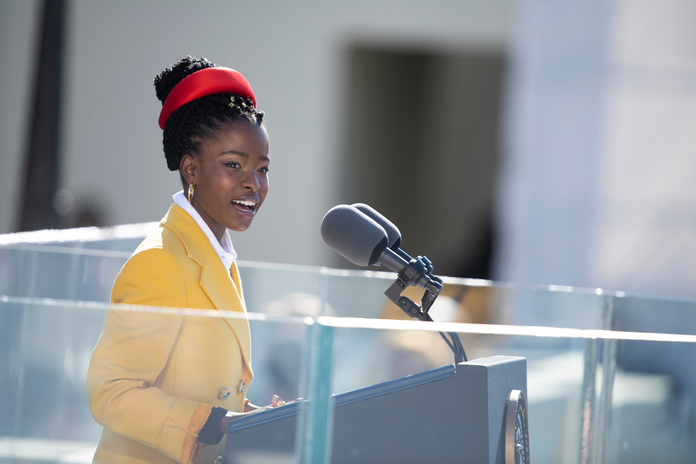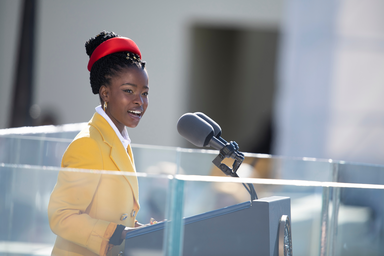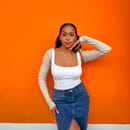As the late Coco Chanel once said, “Dress shabbily and they remember the dress; dress impeccably and they notice the woman.” Fashion is a universal language that has been around for centuries. At an early age, we’re taught that our style can make or break us, and as shallow as that may seem, it’s true for ] the ultimate fashion events of each year. Fashion has allowed many people to make an impression at events worth discussing. From the Met Gala to the Oscars, whether you believe it or not, fashion is always the peak of conversation. Even in the most unexpected events that are nowhere near related to fashion, it sweeps the nation by surprise at how impactful the fashion statements can actually be. In this case: Inauguration Day.
The fashion at the Inauguration ceremony this year immediately became the topic of conversation on all social platforms. From Michelle Obama to Kamala Harris to First Lady Jill Biden, the grand style choices of incorporating monochrome tones and power suits made a huge impression on the public and is talked about days after the ceremony. Multiple tweets on Twitter have made it clear that the women in the Inauguration ceremony are killing the fashion game.
“But why all the commotion about the fashion?” In an article written by Lilah Ramzi, she discusses the impact that the Inauguration fashion has made over the years.
“Why do we care what the first lady wears? She is considered to be the first lady of American society. She’s going out and representing us across the country and around the world, so people tend to feel that they have a right to have an opinion,” says Lisa Kathleen Graddy, curator of American political history, reform movements, and women’s political history at the Smithsonian’s National Museum of American History. “Since 1789, the fabric, construction, origin, and symbolism behind the clothes worn by presidents’ wives on Inauguration Day have been read like a press release on their intentions for the four years ahead,” Ramzi states.
For instance, Mary Todd Lincoln immediately caught attention for what believed to be her Inaugural dress. It featured the highly fashionable crinoline skirt of the mid-19th century, which is decorated with ruffles and a florets pattern. Mary, notably, often wore clothing by designer Elizabeth Keckley — a former slave — once she was in the White House. Being that the designer was a person of color, it gave hope to the population that there was an intention to diminish the fight between slave and non-slave state proponents.
Another honorable mention is Jacqueline Kennedy. Shortly after the election of her husband, John F. Kennedy, she announced that she hoped to position the White House as “a showcase of American art and history.” Oleg Cassini, costume and fashion designer to the stars, became Jackie’s unofficial secretary of style. For the swearing-in of JFK, Jackie wore an A-line dress and coat by Russian-born Cassini. The look featured oversized buttons, a matching pillbox hat, and a muff for added warmth; although it appeared light blue in colored photos taken on the day, the dress and hat are a colorless, beige hue. It was just one of the many looks worn during her time as the first lady that cemented her the title few are really worthy of: fashion icon.
This year’s outfits followed a trend of monochromatic pieces and heavy layering, bold colors with symbolic meaning and the recognition of minority-owned fashion designers. Starting off with Former First Lady Michelle Obama in a deep plum by Sergio Hudson, she looked poised yet sexy in her pantsuit, statement belt and a long coat that radiated elegance. Not to mention her hair, which became trending on Twitter among other inauguration highlights. Watching Michelle own her entrance made me forget about her husband.
Next up we have Vice-President Kamala Harris in Christopher John Rogers. He is a young Black designer raised in Louisiana. He chose to dress Harris in a bright blue and purple, which not only flattered her complexion but had meaning behind it. The color purple is associated with royalty due to its history and as we know, when red and blue come together, they make purple. This symbolized Harris’ call for unity among Democrats and Republicans, something she and President Biden have championed their campaign around. Madam Vice President is also known for her pearls, and there was no doubt she’d be sporting Wilfredo Rosado pearls to be sworn in.
Alexandra O’Neill is the designer behind our First Lady Dr. Jill Biden’s Markarian look, which stole our eyes. The small New York brand designed a breathtaking dress paired with a tweed coat and a neckline full of Swarovski pearls and crystals. It’s not every day that you get to wear sparkles, and the addition of them made the look just as special as the event while bringing femininity and fun to the First Lady. The shade of teal chosen for Dr. Biden looked stunning in contrast to her blonde hair. (Might I say it was better than Jackie Kennedy blue.)
I must mention Amanda Gorman in Prada with a yellow that hints towards the light and brighter days ahead in her poem and brought a youthful essence to her aura. Ella Emhoff, on the other hand, captured the aesthetic of Miu Miu. I’m sure we’ll be seeing more of the design school student’s distinct style. As for the Biden granddaughters Naomi, Finnegan and Natalie, the trio went on with the monochrome in their white, camel and bubblegum looks that showed elegance and youth.
It was a monumental day not just for President Biden, but for all the designers mentioned. With our first woman VP and the most diverse cabinet we’ve seen, the designers behind the fashion clearly reflect the future of inclusivity we are working towards as a country. Getting to display your work on prominent figures in the U.S. is a career-making moment especially for the young and low-key designers behind many of the looks. Going into the future, we hope to see a more prominent role played by fashion on Inauguration Day, with greater commitments to sustainable fashion and letting smaller brands shine.


